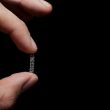Patients with complex coronary artery disease (CAD) undergoing percutaneous coronary intervention (PCI) have worse clinical outcomes tan patients with non-complex CAD. Several studies have shown that the use of intravascular imaging (IVUS, OCT) have reduced major adverse events vs. angiography guided PCI. However, these studies present limitations both of size, studied population, short term followup<a href="https://solaci.org/en/2023/03/08/acc-2023-renovate-complex-pci-intravascular-imaging-guided-vs-angiography-guided-complex-pci/" title="Read more" >...</a>
Microvascular Dysfunction in Symptomatic Patients with Intermediate Coronary Lesions Prognostic impact according to different patterns
Coronary microvascular dysfunction (CMD) is emerging as an important cause of myocardial ischemia, and its role in the pathogenesis of cardiovascular disease—including angina patients with nonobstructive coronary lesions—is well known. Currently, there are several definitions of CMD and several invasive and noninvasive diagnostic tests. Using invasive tests, heterogeneous patterns of microvascular dysfunction, such as coronary<a href="https://solaci.org/en/2023/03/06/microvascular-dysfunction-in-symptomatic-patients-with-intermediate-coronary-lesions-prognostic-impact-according-to-different-patterns/" title="Read more" >...</a>
BIODEGRADE: Does Stent Design Affect Long-Term Clinical Results?
Recent studies have shown that drug-eluting stents with biodegradable polymer and ultrathin struts are safe and effective, including low rates of stent thrombosis. This is why researchers conducted the BIODEGRADE (Biomatrix and Orsiro Drug-Eluting Stents in Angiographic Result in Patients With Coronary Artery Disease) study, which showed the non-inferiority at 18 months of ultrathin biodegradable polymer<a href="https://solaci.org/en/2023/02/16/biodegrade-does-stent-design-affect-long-term-clinical-results/" title="Read more" >...</a>
Intracoronary Brachytherapy for Drug-Eluting Stent Restenosis
3 Year Clinical Outcome Analysis and Failure Predictors in the Use of Intracoronary Brachytherapy for Drug-Eluting Stent Restenosis In-stent restenosis (ISR) has been one of the greatest obstacles standing in the way of long term patency in percutaneous coronary interventions. However, the use of drug eluting stents (DES) and their development has helped reduce ISR<a href="https://solaci.org/en/2023/02/14/intracoronary-brachytherapy-for-drug-eluting-stent-restenosis/" title="Read more" >...</a>
Left Main Coronary Artery PCI Using State-of-the-Art Zotarolimus-Eluting Stents
Percutaneous coronary intervention (PCI) to the left main coronary artery (LMCA) with drug-eluting stent implantation is currently a major challenge due to the size of the vessel, the compromise of a bifurcation lesion in important branches, and the potential risk of complications. Available information on LMCA PCI comes from studies where DES stents were implanted<a href="https://solaci.org/en/2023/01/18/left-main-coronary-artery-pci-using-state-of-the-art-zotarolimus-eluting-stents/" title="Read more" >...</a>
The Most Important Articles of 2022 in Coronary disease
Discover the most important scientific articles of 2022on coronary disease in our website. An Abbreviated Dual Antiplatelet Regimen Is Also Safe in Patients at High Risk for Bleeding Undergoing Complex Angioplasty The MASTER DAPT study analyzed the results of an abbreviated (mean 34 days) vs. conventional dual antiplatelet therapy (DAPT) in 4579 patients treated with angioplasty and a biodegradable polymer sirolimus-eluting stent.<a href="https://solaci.org/en/2023/01/13/the-most-important-articles-of-2022-in-structural-heart-disease-2/" title="Read more" >...</a>
Real-World Revascularization Strategy for Left Main Coronary Artery: Surgery or PCI?
There are many current randomized trials comparing percutaneous coronary intervention (PCI) with myocardial revascularization surgery (MRS) for the treatment of left main coronary artery disease (LMCAD). In the European Society of Cardiology guidelines, PCI is classified as Ia (LMCAD with low-complexity coronary disease) or IIa indication (intermediate complexity), whereas, according to the American Heart Association<a href="https://solaci.org/en/2023/01/11/real-world-revascularization-strategy-for-left-main-coronary-artery-surgery-or-pci/" title="Read more" >...</a>
Is the PASCAL Device Effective against MitraClip?
Mitral regurgitation (MR) is the most common valvulopathy and full medical treatment at maximal tolerated doses has been shown quite effective to treat it. However, its limited in a group of patients that require valve intervention. At present, the ideal treatment is surgical valve replacement, which is in many cases is not viable because of<a href="https://solaci.org/en/2022/12/30/is-the-pascal-device-effective-against-mitraclip/" title="Read more" >...</a>
Combined Calcified Lesion Preparation Strategy
Stent sub-expansion in coronary territory has been identified as one of the major predictors of stent failure at followup, which is why improving stent expansion will improve clinical and imaging outcomes. In percutaneous coronary interventions (PCI) of severely calcified lesions, calcified lesions present a major challenge since they impede stent delivery, causing stent under-expansion or<a href="https://solaci.org/en/2022/12/28/combined-calcified-lesion-preparation-strategy/" title="Read more" >...</a>
Is There any Difference between Modern Valves and Self and Balloon Expandable Valves?
At present TAVR is a valid alternative to treat different risk groups of patients with severe aortic stenosis. Among the different valves, there are two types, the self-expanding (SEV) and the balloon expandable (BEV) valves, that are the most implanted and the most researched by randomized studies across different risk groups. There are different generations<a href="https://solaci.org/en/2022/12/16/is-there-any-difference-between-modern-valves-and-self-and-balloon-expandable-valves/" title="Read more" >...</a>









